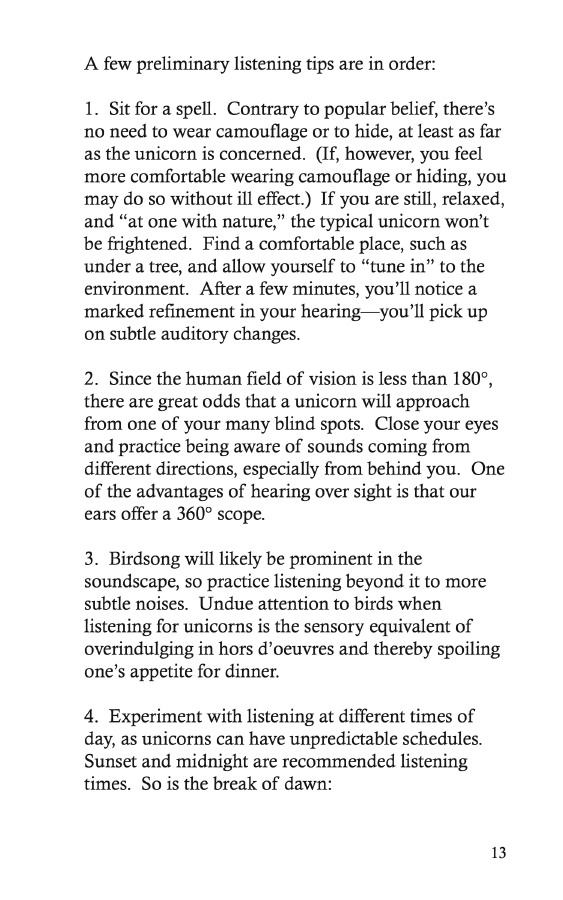
A few preliminary listening tips are in order:
1. Sit for a spell. Contrary to popular belief, there's
no need to wear camouflage or to hide, at least as far
as the unicorn is concerned. (If, however, you feel
more comfortable wearing camouflage or hiding, you
may do so without ill effect.) If you are still, relaxed,
and "at one with nature," the typical unicorn won't
be frightened. Find a comfortable place, such as
under a tree, and allow yourself to "tune in" to the
environment. After a few minutes, you'll notice a
marked refinement in your hearing -- you'll pick up
on subtle auditory changes.
2. Since the human field of vision is less than 180°,
there are great odds that a unicorn will approach
from one of your many blind spots. Close your eyes
and practice being aware of sounds coming from
different directions, especially from behind you. One
of the advantages of hearing over sight is that our
ears offer a 360° scope.
3. Birdsong will likely be prominent in the
soundscape, so practice listening beyond it to more
subtle noises. Undue attention to birds when
listening for unicorns is the sensory equivalent of
overindulging in hors d'oeuvres and thereby spoiling
one's appetite for dinner.
4. Experiment with listening at different times of
day, as unicorns can have unpredictable schedules.
Sunset and midnight are recommended listening
times. So is the break of dawn: